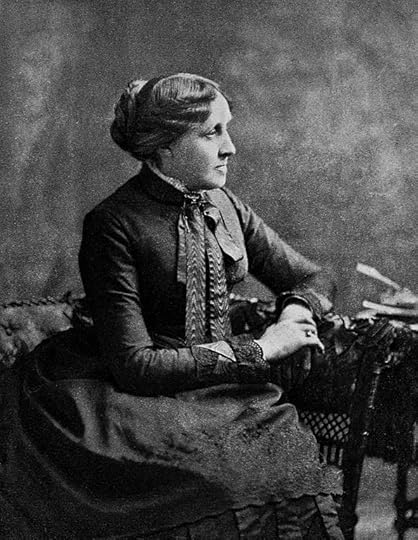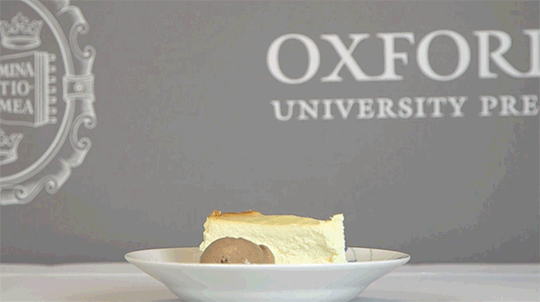Oxford University Press's Blog, page 301
November 14, 2017
Festival Dohori in the Kathmandu Valley
Nepal’s rural hills are famous for the all-night songfests in which conversational dohori and other folk songs are sung, much more so than the Kathmandu Valley. But there are a few places in the capital city and surrounding valley that also have long traditions of gathering and singing at religious festivals. During the years of civil war (1996-2006), these gatherings were sometimes cut short: in August 2005, I watched as the army shut down groups of singers at Patan’s Krishna temple at the festival of Krishna Asthami. But by August 2006, singers had been able to spend the night at the temple undisturbed. In July 2007, I was able to participate in the informal singing at Swayambhunath, on the holiday of Srawan Sakranti, the first day of the lunar month of Srawan.
I stood at the base of the stairs leading up to this Buddhist temple on the northwestern outskirts of Kathmandu. All around me were groups singing dohori: improvised couplets in conversation with each other, some groups in Nepali, some in the Tamang language. Groups would gather around someone with a madal drum, onlookers pressing in to hear the lyrics, a few dancers twirling in the middle of the circle. If a song ended, the group would slowly dissipate, until another pair of singers began a new song, a circle forming anew. It was late afternoon, and dohori songs had been echoing around Swayambhu all day. One new group formed at the base of a tree. They sang in Nepali, in the song style known as Kathmandu-area kathe gīt.
A young girl and a woman in her twenties danced in the small space in the center of the circle. A young man sat on the ground with the madal, playing it while he sang. A young woman sat across from him, answering his song. They improvised their couplets to the tune of a 2006 hit, “Home in Chhauni” (chhauni literally means barracks, but here it refers to a place, an area of Kathmandu), while bystanders joined them, joining in on repetitions of couplets and refrains, dancing and applauding, hooting and hollering:
Refrain (Thego), repeated in unison after each couplet: Launa ghar ta chhaunimā, mero pani āũchha ki nambara, launa māyā lāunīmā Well, my home’s in Chhauni, maybe my number will come up in love, too
Girl: Ā̃suko dhārā, ā̃suko dhārā, chhoḍyo bhane runechhau piyārā (Streams of tears, streams of tears, if you leave me, you’ll cry, dear)
Boy: Timrai ghar dhāune ho chhorā chhorī pahilā ke pāune ho (I’ll keep returning to your house, Will we have a son or daughter first?)
Girl: Dhāune gharko ghumāune ghattara Je pāe ni Ishorko kadara (At the house you’ll return to, a spinning grinding stone, Whatever I have, it’ll be as God wishes)
Boy: Khel khelaima piratī lāechha, piratī lāechha Tara malāi chhorī nai chāhiechha (We’ve fallen in love, we’ve fallen in love, But I need a daughter!)
The song these two sang is emblematic of ordinary festival dohori, variations of which are performed in many places throughout Nepal’s hill regions. It was sung in a public, all-ages space, using the tune of a recent hit in a style specific to this area of Nepal. The singers sang of love, but their words were likely not meant seriously. The fun of the song was in imagining a possible relationship, in coming up with couplets in response to one another, and also in singing and dancing together. I didn’t know the singers—did they know each other? Had they even met before? Were they actually romantically involved? Would they frame this song as a binding contest, in which the loser would owe the winner something, or as the lore has it, marry the winner?
Outsiders could not tell, and that was part of the fun. The group crowded around the singers, delighting in dancing to refrains and listening to couplets. Success in improvising couplets meant perfect adherence to meter and end rhymes, and pleasing the audience by fulfilling or thwarting narrative expectations. The girl’s response “whatever I have, it’ll be as God wishes” is a fulfilling response, in which she performs an accepting type of femininity and religious devotion. The boy’s subsequent statement that he needs a daughter thwarts expectations, an unorthodox statement in a culture of strong son preference. Both types of couplets engage their song-partners and broader audience in the shared pleasure of language play, along with dancing and singing together to the beat of the madal. Like the majority of festival dohori, this did not turn out to be a binding song, and it ended with nothing but words and mutual pleasure exchanged.
Wherever they are held, these festivals are more than just times of religious worship. They are reasons for people to meet, known especially as times for young people to flirt and get to know each other, and dohori singing is one of the ways in which this is done. Rituals of worship, of acknowledging the movement of the seasons, and of courtship thus coincide. Through heightened signification, these rituals frame an extra-ordinary space and time of performance. Yet the song-world is more than simply a space to comment on life, or to imagine new possibilities. Enjoyable and novel juxtapositions in the performance frame can engender new feelings of belonging (and sometimes romantic relationships) across social divides and among strangers, remaining intimately connected with ordinary life.
Featured image: “Free and Easy” by ::ErWin. CC BY-SA 2.0 via Flickr .
The post Festival Dohori in the Kathmandu Valley appeared first on OUPblog.

November 13, 2017
Marital rape in a global context: from 17th century to today
This year’s meeting of the American Society of Criminology will look at how our understanding of crime and violence has changed in the 50 years since President Lyndon Johnson’s Commission on Law Enforcement and Administration of Justice. When thinking about societal change, 50 years can be both a long time and no time at all, in the grand scheme of things. It is important to note that in the Commission’s original document there was no mention of gender violence, sexual assault, sexual harassment, or marital rape. These are violations that have always been a part of human history, but it is only within recent decades that the women and men who are victims of these crimes are being heard, and are being empowered to seek justice against the perpetrators of these crimes.
Sexual violence in marriage has a history as long as the institution of marriage itself. But for millennia, marital rape – like other forms of sexual assault – was considered a private trouble not a public issue. Early rape laws defined the assault as a property crime against the husband or father whose wife or daughter was “defiled.” Under this framework marital rape was an oxymoron since a wife was legally a husband’s sexual property. When 17th century rape laws – from British common law to the Qing dynasty in China (Ng, 1987) – sanctioned rape, it was considered a violation of a woman’s chastity; again, not possible in the context of marriage. Further, British jurist Lord Matthew Hale in 1736 addressed the issue of consent directly by declaring that “The husband cannot be guilty of a rape committed by himself upon his lawful wife, for by their mutual consent and contract the wife hath given up herself in this kind unto her husband, which she cannot retract” (Hale, 1736).
This ideology of permanent, irrevocable consent pervaded legal and cultural conceptualizations of marriage and forced sex within it. And this ideology has global resonance, not because people on many continents were influenced by Lord Hale, but because control of women’s bodies through marriage is foundational to patriarchy. Until 1993, rape laws across the US included a “spousal exemption” that specifically excluded husbands from rape prosecution.
The power relations that contextualize rape are critical, and the ways in which marital rape is currently legally condoned varies globally. In the US, for example, forced sex in marriage is illegal, yet numerous attitudinal surveys show that Americans regard the rape of a wife as far less serious than a similar assault on an acquaintance or stranger. Further, marital rape is rarely prosecuted and almost always as an additional charge along with other violence, including murder. In India, the Supreme Court ruled in February 2015 that marital rape was not a criminal offense. A government minister then told the Parliament that marital rape could not be criminalized in India as “marriages are sacrosanct” in that country.
This ideology has global resonance, not because people on many continents were influenced by Lord Hale, but because control of women’s bodies through marriage is foundational to patriarchy.
There is tremendous variation cross-culturally in whether rape by a husband is regarded as a criminal violation, just an “unfortunate reality”, or an “unquestioned wifely duty.” Regardless of traditional context, however, attitudes are shifting in all cultures. At this point in the 21st century, there are three significant trends that are changing attitudes toward marital rape. First, the idea that women’s rights are human rights is no longer a radical or fringe perspective. International human rights organizations are now recognizing abuse in the private sphere as a rights violation. In fact, sexual violence in marriage has been successfully used as grounds for seeking asylum in the US and Canada.
The second current trend that brings marital rape to the forefront is the global HIV/AIDS pandemic. Research documents that large numbers of women, particularly in sub-Saharan Africa, have been infected by their husbands. The lack of ability to deny sex – or even ask for sex with a condom – can be life threatening for women and their children. Public health policy and practice is increasingly cognizant of the damage marital rape does.
A third trend that is changing the way people think about marital rape is the global transformation of marriage as an institution. The traditional model of marriage as a contract between families for the purpose of reproduction is giving way to companionate marriage based on intimacy – albeit unevenly and despite resistance. The idea that marriage is a relationship between two people based on romantic love validates the conceptualization of the wife as a distinct, autonomous being – an individual with bodily integrity. This change from reproduction to intimacy as the central purpose of marriage represents a tectonic shift in heterosexual relations.
Changes in attitudes and accompanying transformations of policy vary enormously worldwide. However, emerging research from places ranging from Vietnam to South Africa, to Guatemala to the US is revealing a powerful commonality. Regardless of law and cultural attitudes, women who experience sexual assault by their intimate partners describe significant physical, emotional, and social suffering. But now, women’s voices are being heard. As one American woman explained, “somebody brought up the question of marital rape and I was still way too brainwashed and I was like,…what are you talking about? I was his wife. He could do whatever he wanted with me…It took me a long time to realize that I had the right to say no, and that if I didn’t have that right nothing was a real yes.” A woman from Vietnam confided to a researcher about forced sex in her marriage: “For such a long time I couldn’t (reject him), after resisting it wasn’t effective. So, I think I have to accept it, or allow it, so that I can sleep, and then the next day I can work. Many times I think that this is the duty of a wife, so I just accept it and don’t tell anyone. But sometimes I think that this is sexual abuse.” Women across the world struggle with the emotional impact of forced sex, feelings of fear, degradation and anger, as well as significant health consequences. They describe forced pregnancies, HIV infection, cuts, bruises and torn rectums. They describe social suffering in the context of their extended families and community.
But, marital rape is finally coming out from behind closed doors.
Efforts to respond are growing in local communities as well as international organizations. The expansion of criminal justice and public health interventions in sexual violence is important. What we need to remember is that these will be most successful when built on a deeper understanding of complex cultural contexts and women’s lived experience.
Featured image credit: Rings wedding windows by Virgil Cayasa. Public domain via Unsplash.
The post Marital rape in a global context: from 17th century to today appeared first on OUPblog.

On writing: nine quotes from classic authors
You’ve gotten through the first week of National Novel Writing Month. Have you’ve been hitting your word count? Writing 1,665 words every day may not sound like a lot, but sitting down in front of a blank page each day begins to feel like a struggle. Find some inspiration from these Oxford World’s Classics authors!
“Reading maketh a full man; conference a ready man; and writing an exact man.”
In the final five years of his life, Francis Bacon was able to concentrate on his studies. He produced a remarkable amount of work, some of it revised from earlier, unpublished attempts. Bacon, usually writing in Latin, was aiming both for a pan-European reading public and for posterity—a campaign in which he was ably and loyally aided by his chaplain and editor, William Rawley, who continued to publish Bacon’s works into the 1660s, and who penned an early, hugely influential biography of Bacon.
“I think I shall write books, and get rich and famous; that would suit me, so that is my favorite dream.”
This quote is from Little Women and is spoken by perhaps literature’s most intriguing wannabe writer, Jo March. As her sisters dream of castles in the air full of material objects, Jo dreams of a long lasting legacy resulting from her writing.
 “Louisa May Alcott” uploaded by INeverCry. Public domain via Wikimedia Commons.
“Louisa May Alcott” uploaded by INeverCry. Public domain via Wikimedia Commons.“Writing, when properly managed (as you may be sure I think mine is) is but a different name for conversation.”
An early example of metafiction, the quote above from Tristram Shandy brings the reader face to face with the narrator. Sterne’s first tries at writing the book in early 1759 were apparently clumsy and heavy-handed, characterized more by anger than bemusement at the disappointments of his world. The tone was satiric, often bitterly so, and the preoccupation was with human meanness more than with quirks and foibles. But the frustration of the early drafts melted into what became Sterne’s distinctive tone—an uneasy mixture of amusement, irritation, irony, exhilaration, detachment, humorous tolerance, and cold-eyed analysis of human beings.
F. Scott Fitzgerald (1896–1940)
“My theory of writing I can sum up in one sentence. An author ought to write for the youth of his own generation, the critics of the next, and the schoolmasters of ever after.”
The third printing of the first edition of This Side Of Paradise was prepared for distribution to the American Booksellers Association, with a tipped-in leaf entitled “Author’s Apology” and signed by Fitzgerald. The quote above is a portion of that note.
“For those who have tasted the profound activity of writing, reading is no more than a secondary pleasure.”
Stendhal began to write Memoirs of an Egotist on 20 June 1832. He was forty-nine and undertook to describe his years in Paris from 1821 to 1830, but sometimes misremembered the dates of events and included incidents that happened earlier. He put aside the manuscript for good on 4 July 1832. The approximately 40,000 words of Memoirs of an Egotist were therefore written in thirteen days.
“Many suffer from the incurable disease of writing, and it becomes chronic in their sick minds.”
He was one of the greatest Roman satiric poets, author of sixteen satires. Nothing definite is known about his life, but his work survives. His sixteen verse satires present a savage attack on the vice and folly of Roman society. The earlier Satires are unsurpassed in their expression of hatred and disgust; their caustic style is often contrasted with that of the urbane and witty Horace.
“Every secret of a writer’s soul, every experience of his life, every quality of his mind is written large in his works.”
An extract from Virginia Woolf’s diary for 13 April 1930, only a couple of years after the publication of Orlando from which the above was taken: “I read Shakespeare directly I have finished writing, when my mind is agape & red & hot. Then it is astonishing. I never yet knew how amazing his stretch & speed & word coining power is, until I felt it utterly outpace & outrace my own, seeming to start equal & then I see him draw ahead & do things I could not in my wildest tumult & utmost press of mind imagine.”
Federico Garcia Lorca (1898–1936)
“The artist, and particularly the poet, is always an anarchist in the best sense of the word. He must heed only the call that arises within him from three strong voices: the voice of death, with all its foreboding, the voice of love and the voice of art.”
The historical, cultural, and physical landscapes of Andalusia had a profound influence on García Lorca’s dramatic world, but García Lorca’s work cannot be reduced to that arid milieu. Although infused by his native Granada, the richness of his writing comes as much from the traditions of earlier generations of poets like Góngora and Garcilaso, his period at Residencia de Estudiantes in the 1920s—with the two heroes of surrealism, Luis Buñuel and Salvador Dalí—his travels to New York and Cuba in 1929–30, and the pioneering work of his contemporaries like Ramón del Valle-Inclán and Manuel de Falla.
“If it may be handed down to men who will appreciate it, and penetrate to the villages and great cities, then though I should suffer a thousand mutilations, what regret should I have?”
Emperor Wudi had him castrated and such punishments often led officials to commit suicide but he decided to live on to complete his history. In his famous Letter to Ren An he explains, “But before I had finished my rough manuscript, I met with this calamity. It is because I regretted that it had not been completed that I submitted to the extreme penalty without rancor. When I have truly completed this work, I shall deposit it in the Famous Mountain.”
Featured image credit: “close-up-focus-indoors-metal” by it’s me neosiam. CC0 via Pexels.
The post On writing: nine quotes from classic authors appeared first on OUPblog.

5 tips for teaching social media
How can instructors equip students with the skills and knowledge to become effective social media professionals? Three years ago, I left my position as a social media director and transitioned back to academia to focus on this critical question. Since then I have experimented with a variety of pedagogical approaches. Here are a few tips that I have found to be consistently helpful in the classroom.
1. Cover key social media trends on a weekly basis
One of my favorite parts of teaching a social media course is tracking platform trends throughout the semester. This spring a dominant storyline was Facebook’s relentless copying of Snapchat’s core features. Of course, next year will be a different story. To keep up with the constant change, I send an email every week with four or five news articles and then allocate a small amount of time for class discussion. This tactic not only keeps your course relevant but it also instills in your students a critical routine in effective social media management: staying on top of current trends.
2. Bring in real-time cases for analysis
The social media world is not short on compelling cases, so discuss them in your classes as they are happening. This year Wendy’s #NuggsforCarter and United Airlines’ crises of #Leggingsgate and the “re-accommodation” of passenger Dr. David Dao were ripe materials for analyzing the promise and peril of social media in the business context. To be sure, “historical” cases (and I use that term liberally in social media) still have merit as an educational tool and should not be eliminated from your curriculum. But when the next meme and/or crisis hits, be prepared to change course for a few minutes, surface the case in class, and ask students how they would manage the situation if they were in charge of the company’s social media platforms.
 Facebook instagram network notebook by Pixabay. Public domain via Unsplash.
Facebook instagram network notebook by Pixabay. Public domain via Unsplash.3. Assign projects with strategic and creative components
It can be easy in the business world to create a strategy deck and present it. Bringing that strategy to life through content is another matter. For my course’s final project, I have students work with an external organization (an established firm, non-profit, startup, etc.) to develop not only a social media strategy but also create content that delivers on that strategy. Students that may have strengths in content creation can see and understand why the strategy piece is so crucial. And students who are sound strategically can gain an appreciation for the content creation process. I believe that understanding both strategy and content is essential for social media professionals; this project is designed to drive that home.
4. Encourage consistent content creation
Like most subjects, students learn best by doing. Regardless of having a social media novice or a former social media manager in your class, they benefit from a structured approach to creating content. My preferred vehicle for teaching content creation is through my students’ own social media presence. It forces them to think strategically about how they are perceived online, how their online presence fits in with their career strategy, and the type of voice that they’re seeking to develop. Many times they are actively engaging in social media anyway. This project assignment teaches them to be more purposeful in their use of these platforms.
5. Teach fundamental management and communication concepts Any social media course needs grounding in a common conceptual foundation. Without it, all you have are platform trends and recent examples. The bottom line: the platforms will continue to change, but the underlying strategic principles of goals, audiences, platform choice, brand voice, content creation, distribution, and measurement are essential components to any social media management strategy. Giving students this toolkit and helping them apply and refine it is part of the value we can add to their educational experience.
These are just a few educational strategies and tactics that I’ve found most useful. I have no question there are many other possibilities. What have you found as successful in teaching social media?
Featured image credit: social media apps by PixelKult. Public domain via Pixabay.
The post 5 tips for teaching social media appeared first on OUPblog.

What counts as discrimination?
Recent news headlines have focused on allegations of sexual harassment against film tycoon Harvey Weinstein. While the allegations are troubling, they also provide us with an opportunity to consider whether employment discrimination law would properly respond to them. In the United States, the answer is not as clear as one might hope.
Even though many of the women claim that Mr. Weinstein’s actions related to work, American employment discrimination law may not cover these women. Title VII is the federal statute that prohibits sex discrimination in employment in the United States. However, the statute has a major loophole: it does not protect independent contractors, interns, or most volunteers. The courts have interpreted Title VII as limited to the context of employers and their applicants, current employees, and former employees. If a person falls outside of these categories, Title VII does not protect them from sex discrimination, even if that discrimination is occurring in a scenario that we would otherwise classify as work. Individual state laws may provide some protection, but federal law does not.
It is more surprising to learn that even if some of the women in the Weinstein case fell within Title VII’s protections, they still might not be able to prove sexual harassment. The American courts have developed a framework for evaluating harassment claims that requires the harassment to be severe or pervasive. While a single sexual assault would qualify the worker for protection, courts often dismiss harassment cases where men repeatedly ask women out on dates or for sexual favors, as this behavior is deemed not to meet the requirements stated above. Courts have also dismissed cases where women have presented evidence that men have groped their breasts or buttocks. When courts dismiss these cases, they reason that the conduct is not serious enough to constitute harassment.
 Harvey Weinstein at the 2010 Time 100 Gala by David Shankbone. CC BY 3.0 via Wikimedia Commons.
Harvey Weinstein at the 2010 Time 100 Gala by David Shankbone. CC BY 3.0 via Wikimedia Commons.This doctrine also affects retaliation cases. Some courts have held that when a woman complains about harassment and then faces a negative consequence, federal law does not protect her. Some courts hold that if the harassment that generated the complaint is not serious enough, the woman does not receive protection from retaliation when she complains about it. Courts dismiss these retaliation cases even though the discrimination statutes rely on worker complaints as an important part of their remedial scheme.
American employment discrimination law is growing increasingly out of touch with not only the words of the statutes designed to protect workers, but also with the expectations of what reasonable workers believe about what counts as unlawful employment discrimination. Most Americans assume that an employee alleging workplace discrimination faces the same legal system as other litigants. After all, we do not usually think that legal rules vary depending upon the type of claim brought. That assumption is wrong.
Over the course of the last half century, employment discrimination claims have come to operate in a fundamentally different legal system than other claims. It is in many respects a parallel universe, one in which the legal system systematically favors employers over employees. A host of procedural, evidentiary, and substantive mechanisms serve as barriers for employees, making it extremely difficult for workers to access the courts. These mechanisms make it fairly easy for judges to dismiss a case prior to trial.
Many Americans are unaware of how the system operates. Those alleging employment discrimination have fared increasingly poorly in American courts. In recent years, judges have dismissed scores of cases in which workers presented evidence that supervisors referred to them using racial or gender slurs. In one federal district court, judges dismissed more than 80 percent of the race discrimination cases filed over a year. If we are serious about ending workplace discrimination, we must work together to make sure the laws actually protect workers. One easy place for federal courts to start is to re-examine the severe or pervasive doctrine.
Featured image credit: Justitia by FrankMagdelyns1. CC0 Public domain via Pixabay.
The post What counts as discrimination? appeared first on OUPblog.

November 12, 2017
An extinction event for foundations?
Private foundations – the legal entities that have funded social innovations as diverse as breakthrough civil rights litigation and the development of the 911 emergency response system – may be nearing an end. This is certainly not because they have spent down their endowments; the largest still contain billions of dollars and as of 2014 independent and family foundation endowments still contained over $700 billion in assets. Like the dinosaurs in their twilight, these organizations will live on, but they may be the last of their kind, as innovative legal structures for philanthropy attract donors and dollars.
Perhaps the most surprising type of entity now being used for philanthropy is the for-profit limited liability company (LLC). The philanthropy LLC has been pioneered by Silicon Valley philanthropists with tech fortunes to spend; Laurene Powell Jobs, widow of Apple founder Steve Jobs, and Pierre Omidyar, co-founder of eBay, were early adopters. More recently, Mark Zuckerberg and his wife, Dr. Priscilla Chan, inaugurated the Chan-Zuckerberg Initiative as an LLC with a mission of “advancing human potential and promoting equal opportunity.”
As was true of the mammals that supplanted once-dominant titans, the philanthropy LLC may not make a great first impression. But unlike the private foundation, it offers founders an enticing blend of flexibility, privacy, and control. In exchange for the privilege of tax advantages, private foundations must comply with a broad range of regulatory limitations – from endowment spending mandates, to limits on investment activity, to prohibitions on political activity. Failure to meet this expansive web of requirements can result not only in loss of tax-favored status, but penalty taxes imposed on the organization and its leaders. These rules are particularly troublesome for philanthropists like Chan and Zuckerberg, for whom investments in for-profit companies and contributions to political campaigns and causes are important components of their philanthropic vision. Forming a philanthropy as a for-profit LLC instead of a private foundation eliminates them entirely. Bypassing private foundation status also neatly avoids the panoply of disclosures such entities must make: everything from the substance of their finances to the names of their donors. Finally, eschewing nonprofit status means a donor can make the ultimate course correction: rather than locking donated assets into the charitable stream, an LLC structure allows philanthropists to change their minds and take back their assets.
 Sheryl Sandberg, Chief Operating Officer and Member of the Board, Facebook, USA; Young Global Leader Alumnus gives a statement during the session ‘Women in Economic Decision-making’ at the Annual Meeting 2013 of the World Economic Forum in Davos, Switzerland, January 25, 2013. Image credit: Sheryl Sandberg World Economic Forum 2013 by World Economic Forum. CC BY-SA 2.0 via Wikimedia Commons.
Sheryl Sandberg, Chief Operating Officer and Member of the Board, Facebook, USA; Young Global Leader Alumnus gives a statement during the session ‘Women in Economic Decision-making’ at the Annual Meeting 2013 of the World Economic Forum in Davos, Switzerland, January 25, 2013. Image credit: Sheryl Sandberg World Economic Forum 2013 by World Economic Forum. CC BY-SA 2.0 via Wikimedia Commons.Of course, there are costs to choosing for-profit philanthropy – essentially a higher bill. A philanthropy LLC won’t itself be tax-exempt and income passed through to its owners will be taxable. Likewise, the interests a founder holds in their philanthropy LLC will be included in their taxable estate at death. But these tax costs can often be minimized. The income of an LLC formed to pursue social good may well be low or even negative. Moreover, just as income will be passed through to its owners, so will the deductions for any charitable contributions it makes. Any estate tax concern can also be easily avoided with an estate plan that donates the interest in the LLC to a tax-exempt charitable entity at the founder’s death. For many wealthy donors, the tax costs of a philanthropy LLC will be outweighed by its advantages in flexibility, privacy, and control.
For donors who still view optimal tax savings as paramount, another vehicle will also often outperform the private foundation: the donor-advised fund. A donor-advised-fund is a kind of green room for charitably-destined assets. Donors contribute cash or other assets to their funds, and a sponsor entity holds and manages the assets until they take the stage. The sponsor – technically – chooses the recipient, but donors are permitted to advise the sponsor of their preferred recipients. So long as recipients are tax-exempt public charities recognized by the IRS, sponsors almost invariably comply.
Silicon Valley tech giants have also embraced this alternative. Over the past two years, Facebook chief operating officer Sheryl Sandberg has donated over $200 million to her donor-advised-fund, much of which will eventually be granted out to charities focused on women and girls. The donor-advised-fund has spread farther and wider thus far than the philanthropy LLC. They are used by millions of donors of all sizes and backgrounds, so many in fact that the sponsor of Sandberg’s fund – Fidelity Charitable (yes, there is a link to that Fidelity) – has grown to be the largest public charity in the United States. This business is booming: “contributions to [its] donor-advised funds … skyrocketed to $6.85 billion in the fiscal year that ended June 30, a 68 percent increase over the previous year.”
A donor-advised fund offers two principal advantages over a private foundation: timing and deductibility. The timeline for donor-advised fund distributions is flexible. Sponsors will typically make a distribution swiftly on donor advice; in fact, some enable donors to initiate the process with a few mouse clicks. Some sponsors also make efforts to nudge donors to offer advice on stagnant accounts. But, in notable contrast to foundations’ annual five-percent endowment payout mandate, tax law doesn’t require distributions to occur on any particular schedule.
Donors’ tax deductions, in contrast, are available immediately. They also can be more valuable to the donor-taxpayer than identical contributions to a private foundation. For example, gifts of appreciated property – like Sandberg’s stock – to a donor-advised fund are deductible at their full, fair market value. Deductions for contributions of appreciated property to private foundations are limited to the donor’s basis.
Innovations like the philanthropy LLC and the Fidelity Charitable donor-advised-funds appear poised to relegate the private foundation—and with it the traditional boundary between the nonprofit and for-profit sectors—to the dustbin of history. For good and for ill, we can no longer easily separate the worlds of seeking profit for owners and doing good for others. The availability of these alternatives will make philanthropists think hard before establishing a traditional private foundation. Structures like these may encourage greater investment for prosocial activity, but they also dampen tax law’s ability to channel the power of elite philanthropists.
Featured image: “Dollar Money Us-Dollar Arrangement Funds Currency” by geralt. CC0 via Pixabay.
The post An extinction event for foundations? appeared first on OUPblog.

A writer’s guide to witches in pop culture [timeline]
From The Wizard of Oz to Harry Potter, witchcraft is a linchpin of contemporary fantasy writing—with each writer applying their own twist. Referencing The Oxford Illustrated History of Witchcraft and Magic, we’ve put together a timeline of pop-culture’s most well-known depictions of witchcraft.
Featured image credit: “popcorn-cinema-ticket-film” by annca. CC0 via Pixabay.
The post A writer’s guide to witches in pop culture [timeline] appeared first on OUPblog.

The plot thins
In The Prime of Miss Jean Brodie by Muriel Spark, the heroine teaches in Edinburgh in the 1930s. She has a special set of favourites amongst her pupils, loves one-armed Roman Catholic art teacher and WW1 veteran Teddy Lloyd, and sympathises with Mussolini. A member of her set, Sandy, eventually sleeps with Lloyd and then becomes a nun, writing a book called The Transfiguration of the Commonplace.
What else is true in this novel? Is Venezuela the world’s leading oil exporter? Is the Indian Scout motorcycle produced in Springfield, Massachusetts? Is my father living in Chelmsford? And is it true that around 40 years later, Arthur Danto will write a work of philosophy called The Transfiguration of the Commonplace, named after Sandy’s book? After all, these are all things that were also true in the actual world, at the time when the book is set.
The right answer here is that these facts are not relevant to Spark’s novel and shouldn’t be counted as true in it. Facts that are relevant include facts about the effect of WW1 on those who survived it, about class-conscious Edinburgh society, absolute right answer here is that these facts are not relevant to Spark’s novel and shouldn’t be counted as true in it. Facts that aren’ t relevant are the history of Presbyterian and Catholic relations in Scotland, and so on. But even so, not every actual world fact gets in. Most are irrelevant and would be distracting.
Many philosophers writing on fiction have disagreed, however. For instance, Tamar Gendler writes that “import laws” concerning the admission of actual world facts into fictions are “extremely lenient”: “in general (though there will be numerous exceptions), if something is true in the actual world, it will be true in the fictional world”. Gendler here seems to be endorsing what Marie-Laure Ryan has called “the principle of minimal departure” (PMD), according to which “we reconstrue the world of a fiction … as being the closest possible to the world we know”.
It’s true that we adopt something like PMD towards non-fiction, which aims to transmit information about the actual world to the reader. In light of that aim, it’s arguably a convention that the reader may “import” anything from the actual world – or perhaps more cautiously, anything she thinks the author believes. But fiction operates differently to non-fiction. No fiction is exclusively dedicated to the conveying of information.
A different reason to adopt PMD towards fiction would be if stories always described counterfactuals: that is, if they were explorations of ways the actual world is not, but might have been (e.g. “What would have happened, had Hitler won?”). In exploring a counterfactual, we consider some non-actual state of affairs against a background of what we believe to be the case. However, hardly any novels and stories, are exclusively aimed at exploring counterfactuals. Many genres depend on precisely not thinking about what else would actually be the case, if the story was true. As a couple walk off into the sunset in a romance, it doesn’t help fulfil the aims of the genre to think there is a 42% chance of their getting divorced. Thoughts about the anomalously high murder rate amongst Miss Marple’s acquaintances would somewhat spoil imaginative engagement with Agatha Christie’s novels. And so on.
A historical influence on PMD’s popularity has been the article “Truth in Fiction” by Australian philosopher David Lewis. Simplifying a bit, Lewis proposes two rival principles, which he refuses to choose. The first, roughly speaking, is PMD. The second says, again roughly, that we should import into a fiction, any states of affairs widely believed to be the case at the time of the book’s writing. But both principles face problems, as Lewis himself notes. For one, in the context of the horror genre, a pale faced man with pointy teeth who hates garlic and sunlight is usually a vampire, even if the author doesn’t say so; yet were we to “import” facts (or widely held beliefs) about the actual world into the story, where there are no vampires, we should classify him only as an anaemic with dental problems. Equally, in Charlotte Brontë’s Villette, the motif of boxes and enclosures tells us something about Lucy Snowe’s repressed sexuality. Yet there is no room for this interpretation according to Lewis’s principles: in the actual world (or what is widely believed about it), the presence of boxes in someone’s life doesn’t indicate they’re sexually repressed.
The central underlying problem with PMD and its ilk is that it doesn’t recognise the diversity of purposes with which fiction is written. A story might be written in order to explore a counterfactual, but alternatively might be written to thrill; explore a particular theme; achieve expressive effects with language; innovate artistically; indoctrinate; amuse; symbolise; fantasise; release reader’s emotions; sexually arouse; frighten; and so on. As these purposes have emerged, so too have a variety of conventional strategies for getting readers to respond appropriately. For many of these, PMD wouldn’t help, and may well hinder.
Why are philosophers drawn to PMD? It’s tempting to offer an anecdotal, possibly uncharitable explanation: being busy reading philosophy texts, philosophers don’t tend to read much fiction, tending to read only narrowly where they do. Gilbert Ryle once suggested, perhaps facetiously, that the only novels worth reading were Jane Austen’s. Wittgenstein had a great appetite for crime fiction. And if David Hume is right, and “we choose our favourite author as we do our friend, from a conformity of humour and disposition”, then many philosophers, including Lewis himself, apparently share the humour and disposition of Sir Arthur Conan Doyle, so fond are they of using Sherlock Holmes stories as a source of examples. If philosophers aren’t fully acquainted with the vast range of uses to which fiction can be put, or even are more familiar generally with non-fiction than fiction, then it isn’t surprising that they tend to treat fiction as monolithic in nature, and so distort it. Basically, I’m telling philosophers of fiction to read more fiction! It’s the best fun you can have at work.
Featured image credit: “Ophelia” by After Sir John Everett Millais. Public domain via The Met Museum.
The post The plot thins appeared first on OUPblog.

November 11, 2017
Morals and the military [an excerpt]
In honor of Veterans Day, we would like to focus on the men and women around the world who have been committed to the defense of their countries and their fellow citizens. Replacing Armistice Day in 1954, this holiday serves to recognize victims of all wars and the US veterans who have served honorably in the military. However, in times of war, the distinction between moral and immoral are unclear, and factors that determine one’s honor are called into question. As retired US Marine Corps General John R. Allen states in the forward of Military Ethics: What Everyone Needs to Know®, “reconciling the necessity of violence and killing in war with our moral values is one of the most demanding challenges we have faced as a nation.” In this excerpt, George Lucas looks at the ethical aspects of some of the duties that military personnel engage in apart from combat.
Military forces and personnel are frequently charged, or simply left, with the responsibility of restoring order and clearing up the chaos remaining in the wake of a war. This may include tasks like building schools and housing and repairing civil infrastructure (such as roads, sewers, water treatment plants, and electrical grids). These are extensive and expensive enterprises, and so military personnel will serve not only as civil engineers engaged in these activities themselves but also as program managers and procurement agents, contracting with and hiring local personnel, or bringing in outside contractors to assist with these projects, which will then be overseen by military supervisors and paid from funds they administer. The ethical challenges that arise here, especially amid the chaos and disorder and absence of rigorous accountability, transparency, and oversight, are predominantly tests of character: requiring each and every member of the military to avoid involvement in, or tolerance of, graft, corruption, bribery, or outright incompetence in the administration of these important tasks, while seeking always to remain in compliance with applicable laws and regulatory standards.
The military is also perpetually engaged in preparing its members for engaging in war. They must recruit and train new personnel, both officers and enlisted, for example. Especially when recruiting new enlisted personnel, military recruiters may operate widely in far-flung regions of a country without immediate oversight or supervision. They may be required to meet recruiting quotas, which leads to the temptation to cajole, persuade, and even mislead interested civilians in enlisting in military service under false (or, at least, not altogether accurate) circumstances, or even result in the paying of illicit bonuses to leading members of a community (school guidance counselors, for example) to assist in enticing young people under their sway to enlist. In all these activities, temptations to bribery, corruption, misuse of funds, or disseminating false or misleading information to prospects must be resisted. While destructive wherever such abuses occur, these recruiting abuses are especially destructive to the formation of trained, professional military services in developing countries.
Experienced military personnel are likewise expected to train or educate newly recruited personnel for military service. That training or education must be accurate, complete, fully competent, and strictly relevant to the proper performance of duties and discharge of military responsibilities. The training environment itself, however, presents supervisors with myriad opportunities and temptations to do otherwise: for example, to abuse their authority and trust by engaging in or tolerating hazing or bullying in the name of toughening up recruits, or by preying upon vulnerable recruits in other ways. Military forces and organizations, once the exclusive bastion of males, for example, are increasingly integrated across both gender and sexual orientation. Sexual harassment, predominantly (though not exclusively) of females by males, or of gay and lesbian service members by those disapproving or contemptuous of their orientations, are a frequent and vexing problem. Despite the historical tendency of military forces to be asked or ordered to serve in the vanguard of wider social programs to achieve equal opportunity and full integration, racism and sexism remain persistent and nagging problems. These difficulties, in turn, can be exacerbated by the propensities of the military’s individual members, if left unchecked, to engage in alcohol or drug abuse.
A great many of these social problems, to be sure, are endemic to many other professions and organizations, as well as to the wider societies within which military personnel serve. That commonality does not exempt military organizations and their personnel from doing their utmost to combat such tendencies toward abuse of power and disrespect for one another, let alone engaging in outright illegal and immoral activities (rape, theft, drug abuse, or physical abuse or engaging in hateful actions directed at minorities). Military organizations, especially in countries like the United States and the People’s Republic of China, are large, complex organizations providing employment to the widest conceivable diversity of personnel with a range of skills and educational backgrounds. It therefore constitutes an enormous challenge to ensure that all members of the profession are properly trained, well educated, and appropriately supervised in a manner that enables them to discharge their duties responsibly, and to avoid the myriad pitfalls of illegal and immoral behavior outlined above.
Featured image credit: “Veteran” by TammyatWTI. CC0 Public Domain via Pixabay.
The post Morals and the military [an excerpt] appeared first on OUPblog.

Four NYC-inspired sundaes for National Sundae Day
This 11 November is National Sundae Day. To celebrate, we’ve created four New York City–themed sundae recipes, inspired by Greater Gotham: A History of New York City from 1898 to 1919. Take a look at the recipes below and get a taste of NYC—no matter where you are in the world.

Grand Central Sundae
Classic New York flavors come together in this sundae named for New York’s largest train station.
1 slice of New York–style cheesecake
1 scoop of chocolate ice cream
chocolate syrup to taste
whipped cream to taste
1 cherry on top

The Big Apple Crisp
Embrace fall in New York with this apple-cinnamon sundae.
2 scoops of vanilla or strawberry ice cream
3 apple slices
cinnamon to taste
whipped cream to taste
1 cherry on top

Brooklyn Brownstone
Named for Brooklyn’s iconic brownstone apartment buildings, this dish is perfect for hipsters and chocolate-lovers alike.
1 brownie
2 scoops of chocolate ice cream
chocolate syrup to taste
whipped cream to taste
1 cherry on top

Chrysler Crunch
Like New York’s famous skyscraper, this sundae and its toppings stand tall.
2 scoops of chocolate chip ice cream
1/4 cup of chocolate chips
3 pretzels
1 waffle cone, crushed
Featured image credit: “ice-cream-cone-chocolate-mocha” by StockSnap. CC0 via Pixabay.
The post Four NYC-inspired sundaes for National Sundae Day appeared first on OUPblog.

Oxford University Press's Blog
- Oxford University Press's profile
- 238 followers



